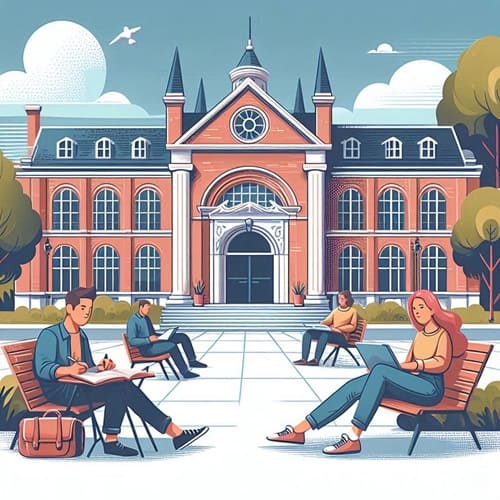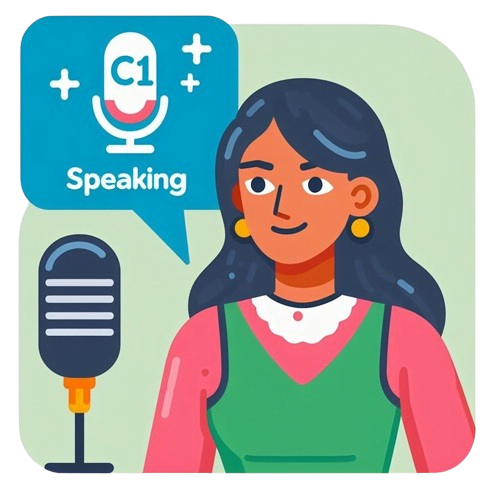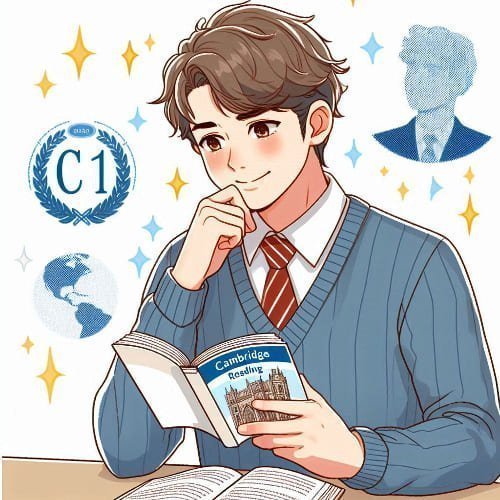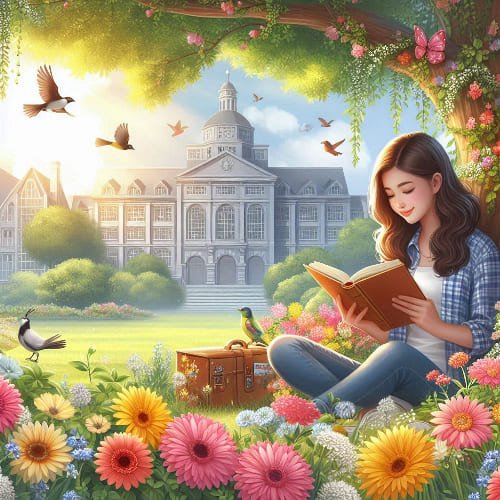CAE Reading and Use of English (RUE) Part 8 Practice Test
What you will find in this guide:
CAE Reading Practice Test
Welcome to our dedicated page for Cambridge C1 Advanced (CAE) Reading Part 8 practice tests! Aspiring candidates aiming to enhance their proficiency in English at an advanced level will find invaluable resources here to prepare for the challenging Reading Part 8 section of the Cambridge C1 Advanced exam. This section evaluates your ability to comprehend and analyze complex texts, making it a crucial component of the overall assessment. To aid your preparation, we have meticulously crafted two comprehensive practice tests that mirror the format and difficulty of the official CAE exam. These tests will not only familiarize you with the types of questions you may encounter but also provide an opportunity to refine your critical reading skills. Dive into these practice tests, sharpen your comprehension abilities, and boost your confidence to excel in the Reading Part 8 of the Cambridge C1 Advanced exam.

CAE Reading Part 8, Practice Test 1
CAE Reading Part 8
You are going to read an article by a psychologist about laughter. For questions 47 – 56, choose from the sections (A – D). The sections may be chosen more than once.
Mark your answers on the separate answer sheet.
Which section
comments on which person laughs within a verbal exchange?
uses a comparison with other physical functions to support an idea?
gives reasons why understanding laughter supplies very useful insights?
refers to someone who understood the self-perpetuating nature of laughter?
cites a study that involved watching people without their knowledge?
describes laughter having a detrimental effect?
criticises other research for failing to consider a key function of laughter?
explains that laughing does not usually take precedence over speaking?
describes people observing themselves?
encourages checking that a proposition is correct?
Why do people laugh?
Psychologist Robert Provine writes about why and when we laugh.
A
In 1962, what began as an isolated fit of laughter in a group of schoolgirls in Tanzania rapidly rose to epidemic proportions. Contagious laughter spread from one individual to the next and between communities. Fluctuating in intensity, the laughter epidemic lasted for around two and a half years and during this time at least 14 schools were closed and about 1,000 people afflicted. Laughter epidemics, big and small, are universal. Laughter yoga, an innovation of Madan Kataria of Mumbai, taps into contagious laughter for his Laughter Yoga clubs. Members gather in public places to engage in laughter exercises to energise the body and improve health. Kataria realised that only laughter is needed to stimulate laughter – no jokes are necessary. When we hear laughter, we become beasts of the herd, mindlessly laughing in turn, producing a behavioural chain reaction that sweeps through our group.
B
Laughter is a rich source of information about complex social relationships, if you know where to look. Learning to ‘read’ laughter is particularly valuable because laughter is involuntary and hard to fake, providing uncensored, honest accounts of what people really think about each other. It is a decidedly social signal. The social context of laughter was established by 72 student volunteers in my classes, who recorded their own laughter, its time of occurrence and social circumstance in small notebooks (laugh logbooks) during a one-week period. The sociality of laughter was striking. My logbook keepers laughed about 30 times more when they were around others than when they were alone – laughter almost disappeared among solitary subjects.
C
Further clues about the social context of laughter came from the surreptitious observation of 1,200 instances of conversational laughter among anonymous people in public places. My colleagues and I noted the gender of the speaker and audience (listener), whether the speaker or the audience laughed, and what was said immediately before laughter occurred. Contrary to expectation, most conversational laughter was not a response to jokes or humorous stories. Fewer than 20% of pre-laugh comments were remotely jokelike or humorous. Most laughter followed banal remarks such as ‘Are you sure?’ and ‘It was nice meeting you too.’ Mutual playfulness, in-group feeling and positive emotional tone – not comedy – mark the social settings of most naturally occurring laughter. Another counterintuitive discovery was that the average speaker laughs about 46% more often than the audience. This contrasts with the scenario in stand-up comedy – a type of comedy performance in which a non-laughing speaker presents jokes to a laughing audience. Comedy performance in general proves an inadequate model for everyday conversational laughter. Analyses that focus only on audience behaviour (a common approach) are obviously limited because they neglect the social nature of the laughing relationship.
D
Amazingly, we somehow navigate society, laughing at just the right times, while not consciously knowing what we are doing. In our sample of 1,200 laughter episodes, the speaker and the audience seldom interrupted the phrase structure of speech with a ha-ha. Thus, a speaker may say ‘You are wearing that? Ha-ha,’ but rarely ‘You are wearing… ha-ha… that?’ The occurrence of laughter during pauses, at the end of phrases, and before and after statements and questions suggests that a neurologically based process governs the placement of laughter. Speech is dominant over laughter because it has priority access to the single vocalisation channel, and laughter does not violate the integrity of phrase structure. Laughter in speech is similar to punctuation in written communication. If punctuation of speech by laughter seems unlikely, consider that breathing and coughing also punctuate speech. Better yet, why not test my theory of punctuation by examining the placement of laughter in conversation around you, focusing on the placement of ha-ha laughs. It’s a good thing that these competing actions are neurologically orchestrated. How complicated would our lives be if we had to plan when to breathe, talk and laugh.
Practice Test 2
In this CAE reading part 8 practice test, you are going to read an article in which four academics give their views on fiction.
For questions 47-56, choose from the sections of the article (A-D). The sections may be chosen more than once. When more than one answer is required, these may be given in any order.
Which academic …
47 compares books to other story-telling art forms?
48 admits to gaps in their literary knowledge?
49 suggests a possible consequence of not reading novels?
50 points out that opinion about a book depends on the period in which it is being judged?
51 explains why readers sometimes choose to read books which are not considered classic works of literature?
52 believes that it is possible to improve any novel?
53 gives reassurance about people whose choice of reading is limited?
54 says that no-one should feel obliged to read a particular type of book?
55 gives another writer’s opinion on why people enjoy reading literature?
56 defends their right to judge particular types of novels?
Why Do We Read Novels?
We asked a group of academics for their views on the appeal of fiction
A Cathy Smith
Is a work by a prize-winning novelist better than a trashy summer blockbuster? Undoubtedly, if you’re looking for a literary masterpiece. But it’s not ‘better’ if you’re simply looking for escapism. ‘Literary fiction’, unlike ‘genre fiction’ such as mystery or romance, is not about escaping from reality. Instead it provides a means to better understand the world. What makes a work deserve the title of literary fiction can be pinned down, to a certain extent, by critical analysis of the writer’s techniques. Yet a huge element of the appeal of literary fiction lies in something almost indefinable – the brilliant, original idea; the insight that, once written down, seems the only way to say something. Writers of fiction have to recruit or seduce us into their world – only then do we trust them to take us on a journey with them. The books we put down after only a few pages are those which have failed to make that connection with us.
B Matteo Bianco
A novel – whether for adults or children – takes you places, emotionally and imaginatively, which you would never otherwise have visited. However, I don’t think you should put yourself under any more pressure to finish ‘a classic’ than a kids’ comic. And if by ‘classics’ we mean Tolstoy, Proust, Hardy and so on, then my own reading is distinctly patchy. The author Martin Amis once said that the only way we have of evaluating the quality of a book is whether it retains a readership. I think that’s fair enough, though it’s imprecise. A work of fiction can always be fine-tuned in such a way that the final experience for the reader is enhanced, and this fact must say something about the theoretical (if not practical) possibility of stating that one book is better than another. And while I can’t prove that a single copy of a classic work of fiction is a greater gift to the world than a million trashy romances, I’m going to go ahead and say it’s so anyway.
C Gita Sarka
The author Albert Camus says that the appeal of narrative art lies in its power to organise life in such a way that we can reflect on it from a distance and experience it anew. Distinct from television or film, literature allows us significant control over our experience of what’s being presented to us. One book I would always tell anyone to read is The Life and Times of Michael K. – a literary prize winner, but hated by some of my colleagues. It’s a classic for me because of what it says about living in difficult times; to a lot of people it’s just a bit boring and the main character doesn’t speak enough. Categories such as ‘literary masterpieces’ and even ‘literature’ do not exist independently of their assessors – assessors who are bound in an era and see value in part through the eyes of that era. Personally, I find it impossible to make claims that one work is better than another. I can say why it might be worthwhile to study it, but that’s all.
D George C. Schwarz
If, at a certain time in their life a person is interested in just one particular genre or author, that’s fine as long as they have the opportunity of reading a wide range of books throughout their lives. These opportunities can come through family members, teachers and friends who can create the reading landscape and encourage them to look wider and further. A famous writer once said that it’s easy to recognise the people who don’t read fiction, as their outlook on life is narrower and less imaginative, and they find it hard to put themselves in other people’s shoes. It’s a generalisation, but with elements of truth. The power of fiction begins with fairy tales, nursery rhymes and picture books, which give children ways of looking at the world outside their own experience. Literature teachers often recommend reading ‘the classics’. But what classics, whose and which era? In a way it doesn’t matter – the key point is that one can’t escape from a need for shared references and reading experience.







super difficult! It’s because there are quite uncommon vocabulary Like flamboyant or crew.
I guess that everything is reduced to vocabulary. If you don’t know it, you’re lost.